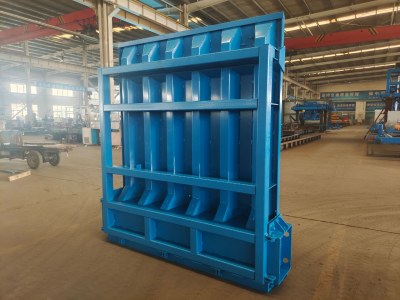Precast Concrete Stationary Table
1. Customizable to drawings and project requirements, enabling tailored dimensions, accessories, and process settings.
2. Optional vibrating system available to enhance concrete compaction, improve component strength, and refine surface finish.
3. Optional heating system ensures stable curing and continuous production in cold environments.
4. Purpose-built as a stationary casting table for precast concrete elements, balancing durability with easy maintenance.
5. Modular and compatible design facilitates integration with existing production lines and supports future upgrades.
6. Flexible configuration and user-friendly operation help boost line efficiency and reduce manual intervention.
The Precast Concrete Stationary Table brings clarity and calm to a busy precast shop. It is built to sit solidly in your production flow and to make routine tasks feel reliable rather than risky. Panels come out with predictable geometry and a surface that needs less correction, so teams spend more time moving product and less time fixing it. The design respects the realities of a crowded plant: it fits into tight layouts, links smoothly with batching and reinforcement stations, and keeps wet operations neatly separated from dry ones. Energy and heat management are treated as part of the machine, not an afterthought, so curing runs with fewer surprises and less waste.What users appreciate most is how the Precast Concrete Stationary Table treats maintenance as a normal part of the day rather than a crisis. Access points, common spare parts, and straightforward controls reduce the friction of upkeep, and that makes the equipment feel like a stable partner rather than a temperamental tool. The table also adapts to varied project needs: inserts, accessories, and process settings can be adjusted without upending the whole line. Together, these qualities make the Precast Concrete Stationary Table useful for builders who need steady quality, dependable delivery, and lower total cost of ownership. It is a practical addition for operations that want clear, repeatable results and fewer last-minute headaches.
1.Space and Layout Advantages
The Precast Concrete Stationary Table is designed with respect for the plant around it. It occupies a concentrated footprint and is meant to live where material flow is already moving, not where it creates new bottlenecks. Feed and discharge points are arranged to reduce unnecessary transfers, and the table pairs well with cranes, carts, and stacking areas so that handling stays efficient. By separating wetter work from finishing and storage, the table helps maintain a cleaner, safer environment. These layout considerations free up staff and machinery for higher value tasks instead of constant repositioning and short runs back and forth.
2.Production Efficiency and Surface Quality
The table’s contact surfaces and locking systems are finished to promote even compaction, which helps panels leave the mold with fewer blemishes and tighter tolerances. That translates to less manual touch up and a smoother path from casting to delivery. Ergonomic access for operators and quick-change elements for inserts reduce downtime during swaps and setup. Vibration and demolding options are selectable so that different mixes and detailing can be handled without compromising cycle rhythm. The result is a repeatable process that gives production planners confidence when scheduling shipments and commits less time to corrective work.
3.Energy Management and Cost Effectiveness
Thermal behavior is considered in the overall design so that curing runs more predictably. Insulating choices and managed heat paths reduce unintended losses during the cure stage, and mechanical drive systems are tuned to avoid excessive peak draws during indexing or turning. These features lower ongoing energy demands and reduce the hidden costs that often accumulate in long production runs. Standardized parts and accessible service points also cut the burden of spare parts logistics and help keep maintenance events short and effective. Together, these elements contribute to a healthier bottom line without demanding dramatic operational changes.
4.Customization and Compatibility
Projects rarely ask for identical panels every time, and the table responds to that variety. Interchangeable inserts, adaptable accessory mounts, and adjustable process settings allow the equipment to match drawing requirements while keeping throughput steady. Its modular nature eases integration into existing lines and supports phased enhancements when new needs arise. Compatibility with common handling gear and lifting fixtures makes it simpler to deploy across different job types, which means fewer workarounds and faster ramp up when a new product is introduced.
5.Safety and Environmental Considerations
The machine supports enclosed handling and automated moves that reduce direct contact with wet material and lower airborne dust exposure. Drainage and cleaning pathways are built into the station to simplify residue removal and reduce environmental impact from washout. Safety interlocks and guarded motion zones protect operators during indexing and demolding activities, and clearer separation of tasks lowers the risk of accidental task overlap. The combination of reduced rework and lower scrap generation also supports a more sustainable production approach and helps teams meet environmental expectations more easily.
6.Maintenance, Serviceability, and Future Growth
The table is laid out so routine checks and replacement of wear items are straightforward tasks rather than disruptive operations. Critical elements follow common standards to make parts sourcing easier, and commissioning support plus operator training help teams reach steady operation sooner. Remote diagnostics and clear troubleshooting aids reduce the time from fault to fix, while upgrade-friendly architecture allows producers to expand capability with minimal rework. As production needs evolve, this approach protects investment and offers a clear path for steady growth.
7.Closing Thought
Practicality, predictability, and resilience are at the heart of the Precast Concrete Stationary Table offering. It is made to slot into busy plants and to lower the friction of everyday production. When consistency, surface quality, and dependable uptime matter most, this table acts less like an exotic device and more like a reliable member of the team, turning routine casting into a process that is easier to plan, control, and deliver.







